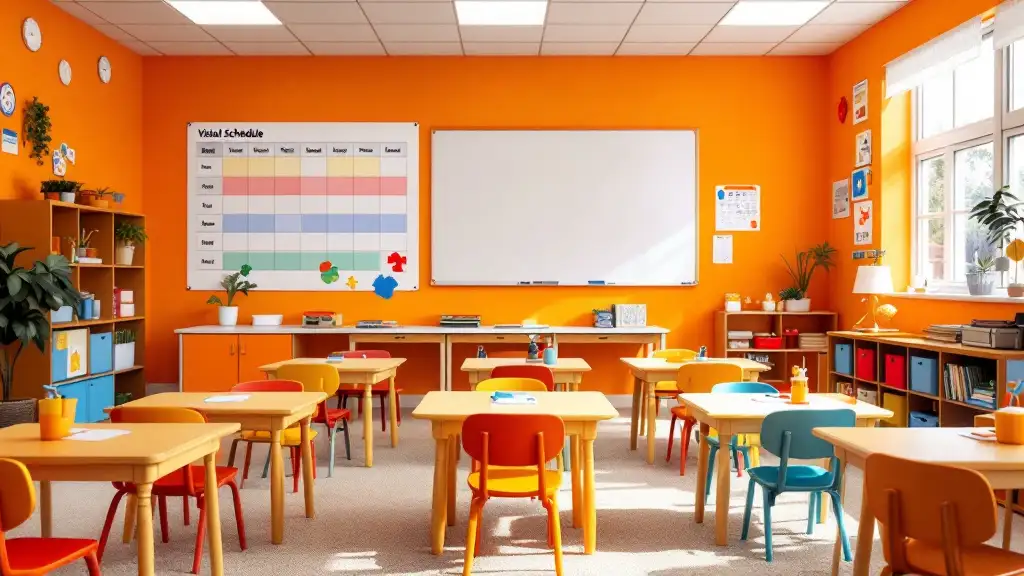Empowering Structures: How Visual Prompts Transform Daily Life for Individuals with Autism
Harnessing the Power of Visual Supports in Autism Care
Visual supports are essential tools in autism intervention, helping individuals understand, navigate, and thrive within their daily routines. By making expectations explicit and predictable, these supports reduce anxiety and promote independence. Developed through credible research and practical expertise, visual prompts—including schedules, choice boards, and cues—are adaptable to meet diverse needs. This article explores the key role of visual supports, their benefits, effective creation and implementation, and how sensory-friendly environments can enhance their impact.
Understanding the Role of Visual Supports in Autism

How do visual supports help structure routines?
Visual supports are crucial tools that help children with autism understand, follow, and anticipate daily routines. They typically include visual schedules, picture charts, and visual cues like icons or objects that represent specific activities. These aids make routines predictable and concrete, which reduces feelings of uncertainty and anxiety.
For example, a visual schedule might display images of brushing teeth, getting dressed, or eating lunch in the order they are to occur. By having a clear visual sequence, children can independently grasp what comes next, fostering confidence and independence.
Implementing visual supports involves designing visuals tailored to the child's understanding and gradually teaching them how to manipulate these tools. Consistent use and positive reinforcement help children internalize routines, making transitions smoother and daily activities less stressful.
How do visual supports impact communication and social understanding?
Visual supports also play a significant role in boosting communication skills and social understanding. They provide a visual language that complements verbal communication, which can be especially helpful for children with limited speech or language delays.
Using visual cues such as pictures or icons for social rules—like sharing or taking turns—helps children interpret social expectations more easily. For example, a card showing a smiling face might signal a positive social interaction.
Moreover, visual supports like social stories or visual scripts prepare children for social situations, helping them understand behavioral expectations and emotional cues. This understanding promotes appropriate responses and improves interactions with peers and adults.
How do visual supports support independence and reduce frustration?
Visual supports empower children with autism to manage their routines with less adult assistance. When children can follow visual cues, they gain a sense of control and confidence, which reduces frustration.
By clearly indicating what activities are next, visual supports minimize confusion and the need for constant verbal prompts. This independence is further encouraged by involving children in creating their visual schedules, fostering ownership and motivation.
Reducing adult prompts also allows caregivers to focus on more individualized support rather than constant supervision. As children become more adept at using visual supports, their frustration levels decrease, and their ability to navigate daily tasks improves.
How do visual schedules help interpret social cues and behavioral expectations?
Visual schedules and cues assist children in understanding what behaviors are acceptable and what social cues to look for. For instance, a visual chart showing a child's turn to speak or a cue for when someone is upset guides them in appropriate social responses.
These visual aids serve as constant reminders of expected behaviors, helping children interpret the social environment clearly.
In conclusion, visual supports are versatile tools that play an essential role in structuring routines, enhancing communication, promoting independence, and understanding social cues. Their individualized use can significantly improve daily functioning and social interactions for those with autism.
Benefits and Practical Uses of Visual Prompts
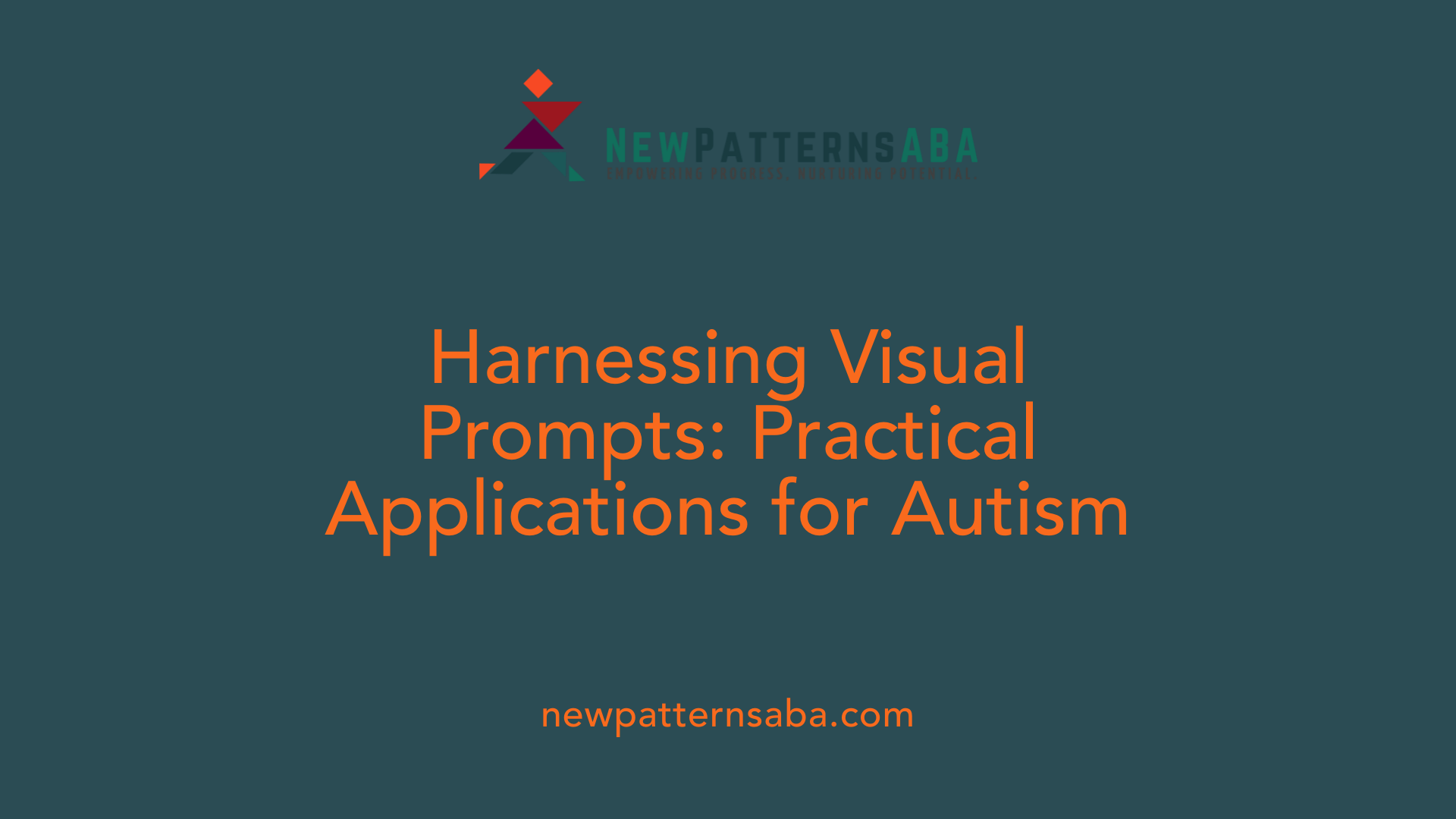
What are the benefits and practical applications of visual prompts for children with autism?
Visual prompts are valuable tools that significantly aid children with autism by improving their communication and comprehension skills. They serve as concrete visual aids that help children understand routines, social cues, and instructions more clearly, reducing confusion and anxiety.
One of the primary advantages of visual supports is that they promote independence. Using tools like visual schedules, choice boards, and social stories enables children to follow daily routines with minimal adult prompts, building confidence and fostering self-sufficiency.
Practical applications of visual prompts include organizing daily activities through visual schedules, which depict the sequence of tasks using pictures, icons, or words. These schedules help children anticipate what comes next, easing transitions and decreasing behavioral difficulties.
In addition, choice boards allow children to make decisions independently, enhancing their decision-making skills. Social stories, on the other hand, teach appropriate social behaviors and reduce social anxiety.
Children with autism often have strong visual processing abilities. Leveraging this strength, visual supports make instructions more engaging and easier to understand, aiding in smoother interactions and learning.
By integrating visual prompts into daily routines and social skills teaching, caregivers and educators can create more predictable, supportive environments. This approach not only reduces stress but also encourages children to become more active participants in their daily lives, ultimately fostering greater autonomy and confidence.
Creating and Implementing Visual Supports Effectively
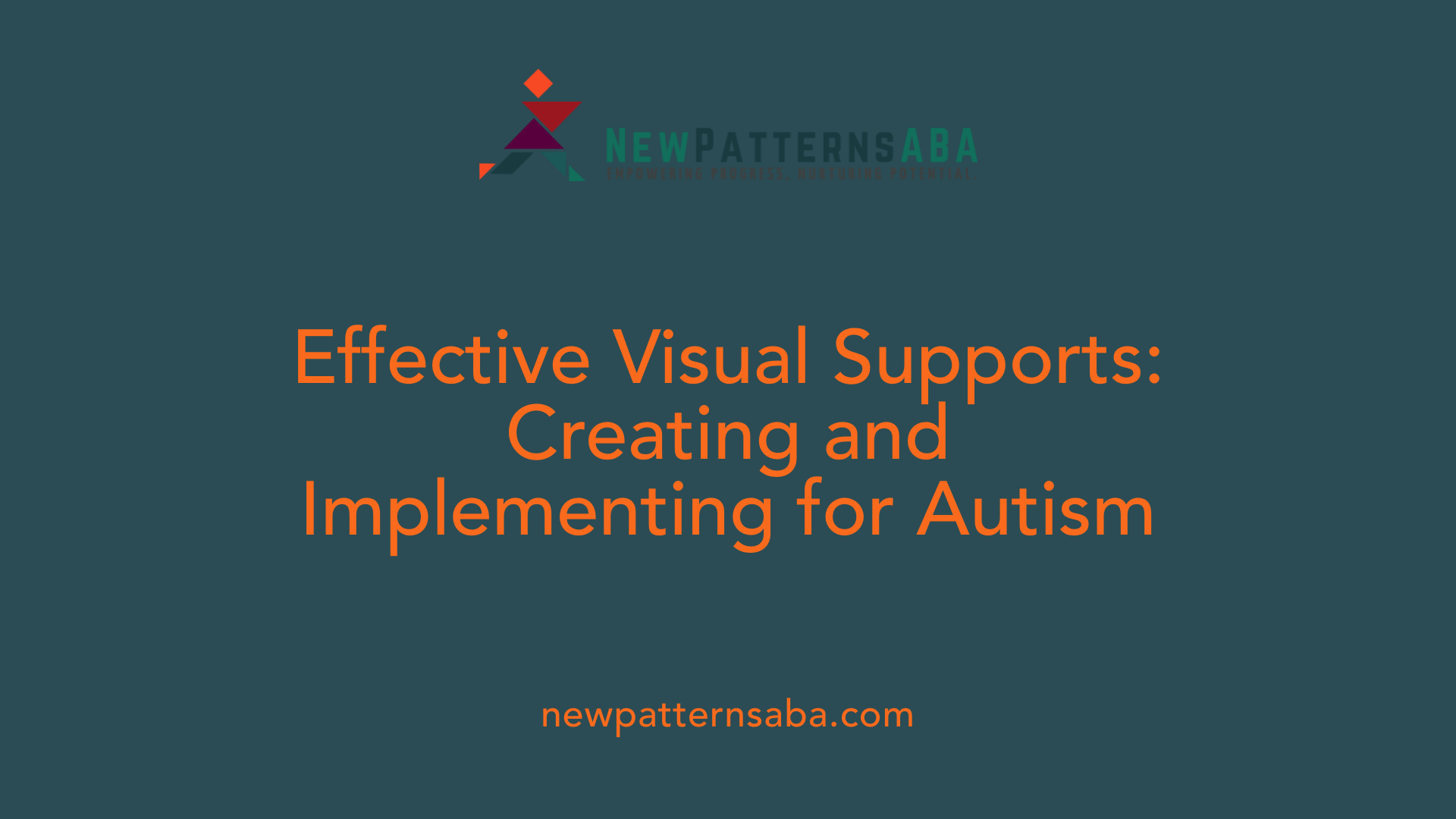
How can visual prompts and schedules be created and implemented effectively in autism care?
Creating impactful visual supports involves choosing suitable visuals that match the individual's level of understanding and specific needs. This typically starts with concrete visuals such as real objects or actual photos, which help individuals make clear connections between the visual and the real-world activity or item. For example, using a real spoon for mealtime or a tangible object as a first-then cue.
As familiarity grows, visuals can gradually shift toward more abstract forms like icons or simple drawings. This progression helps develop understanding and flexibility in using visual cues.
Designing clear and simple schedules is essential. These schedules should be organized in a linear format to outline daily routines or specific activities, such as morning routines or transitions between tasks. Flexibility in presentation—using pictures, icons, or words—allows the schedule to be tailored to the individual’s sensory preferences and comprehension level.
Explicit teaching on how to use and transition between visuals enhances learning. Caregivers and educators should model the use of visuals, practice with the individual, and provide positive reinforcement to encourage independence.
Consistency is crucial. Regularly using the same visuals and routine structures helps individuals anticipate what comes next, reducing anxiety and increasing confidence. As children develop skills and needs change, supports should be adapted—adding new visuals or simplifying existing ones—to keep them relevant and effective.
Incorporating versatile visual supports like social stories, visual task analyses, and rule reminder cards can further improve understanding and social skills. Routine review and gradual fade of adult prompts promote autonomous use of schedules.
Research indicates that well-implemented visual supports foster greater independence, communication, and comfort in individuals with autism. Tailoring visuals and teaching strategies ensures these tools meet each person's unique needs and support positive daily functioning.
Strategies for Utilizing Visual Supports in Daily Routines
What strategies are effective for utilizing visual supports to establish consistent daily routines?
Implementing visual supports effectively can greatly enhance routines for children and adults with autism. One essential strategy is selecting appropriate types of visual aids that suit the individual's preferences and developmental level. Common options include visual schedules, First-Then Boards, and choice boards, each offering clear, concrete representations of activities.
Visual schedules are particularly helpful as they depict the sequence of daily activities using pictures, icons, or words. For instance, a visual schedule for morning routines might include images for waking up, brushing teeth, and getting dressed arranged in logical order. Using these visuals consistently across different environments like home and school promotes familiarity and reduces anxiety.
Teaching the individual how to interpret and use visual supports explicitly is crucial. Caregivers and educators should model how to manipulate and follow the visuals, encouraging independence. Making the visuals accessible and understandable involves arranging them in a straightforward manner and teaching transitions between tasks, which helps improve comprehension and confidence.
Regular evaluation of the visual supports is necessary to ensure they remain relevant and effective. As the individual's skills develop, adjustments—such as adding more complex steps or modifying visuals—help maintain engagement and usefulness. By following these strategies, visual supports can become powerful tools to foster routine understanding, independence, and emotional wellbeing.
Designing Sensory-Friendly Environments to Support Visual Strategies
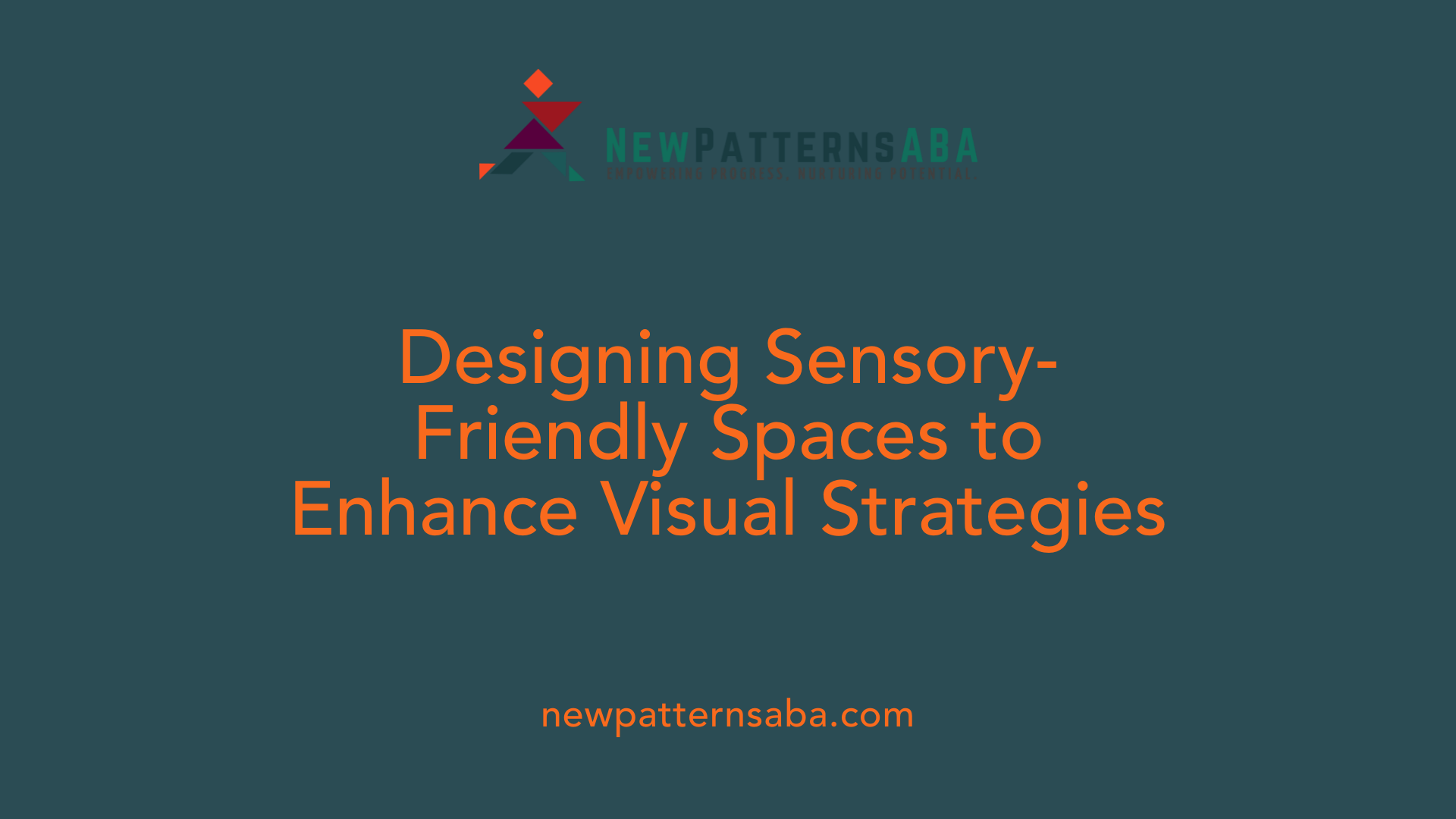
How can sensory-friendly environments be designed to complement visual support strategies for autism?
Creating a sensory-friendly environment is essential to maximize the effectiveness of visual supports for children and adults with autism. These environments are crafted to reduce sensory overload and promote calmness, making visual cues more accessible and meaningful.
A primary strategy involves adjusting lighting conditions. Using dimmable lights and natural lighting helps decrease visual overstimulation, which can be overwhelming for many individuals on the spectrum. Avoiding flickering fluorescent lights and harsh artificial illumination contributes to a more soothing space.
Reducing visual clutter and patterned fabrics is another crucial aspect. An uncluttered environment with minimal visual noise helps individuals focus on the visual supports without distraction. Choosing simple, solid-colored backgrounds and avoiding busy patterns can make visual schedules and cues stand out clearly.
Designating quiet zones or sensory corners is also beneficial. These spaces, free from excessive stimuli, serve as private areas for relaxation and emotional regulation. Incorporating calming visual elements in these zones, such as soft colors and tactile materials, supports sensory processing and helps maintain a sense of security.
Controlling visual stimuli by managing the use of colors, avoiding flickering lights, and selecting non-reflective surfaces enhances comfort. Limiting the number of visual items in a space prevents cognitive overload and makes visual supports more effective.
Collaboration with professionals like occupational therapists and interior designers can ensure the environment is optimized. These experts help integrate visual supports seamlessly while respecting individual sensory sensitivities, leading to a balanced, autism-friendly space.
Incorporating these design principles fosters participation, reduces anxiety, and promotes independence. When sensory-friendly features complement visual strategies, individuals with autism experience greater comfort and engagement in everyday settings.
Integrating Therapeutic Tools and Environment Design
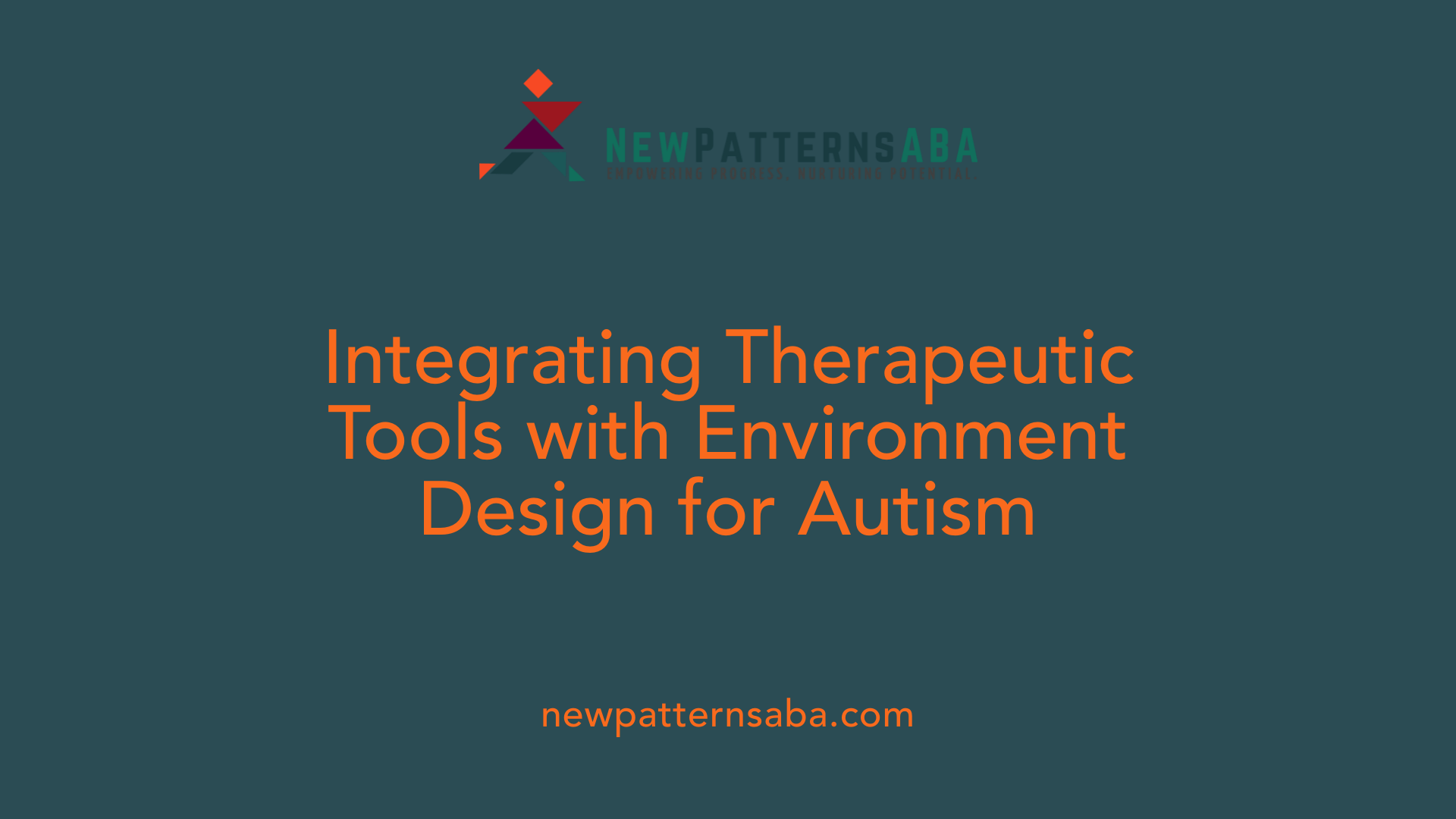
What approaches can be taken to design sensory-friendly environments that support visual prompts in autism?
Designing environments that are sensory-friendly and support visual prompts involves a thoughtful combination of calming tools, designated spaces, and visual supports.
One effective approach is incorporating calming tools like weighted blankets, which provide gentle pressure to help reduce anxiety and promote relaxation. Soft, soothing music or vibration devices can also be used to create a calming ambiance.
Creating dedicated sensory zones is essential. These spaces should feature calming lighting, soft colors, and tactile elements such as textured fabrics or tactile toys. It’s important to minimize visual clutter and patterned fabrics to avoid overstimulation.
Integrating visual supports—like visual schedules, social stories, and cue cards—within these zones helps children recognize calming routines and encourages emotional regulation. Visual prompts can guide children through calming activities or transitions, making the environment both supportive and predictable.
Collaboration with occupational therapists and interior designers ensures that the environment meets individual sensory needs. This teamwork results in spaces that are safe, inviting, and functional.
By embracing these strategies, environments become places where children with autism can engage with visual supports comfortably, fostering increased participation, calmness, and emotional resilience. Overall, such environments are instrumental in supporting sensory regulation and emotional wellbeing.
Bridging Visual Strategies and Sensory Needs for Better Outcomes
Implementing visual prompts in autism is a powerful approach to fostering independence, reducing anxiety, and supporting daily routines. When combined with sensory-friendly environment design, these strategies become even more effective, creating spaces that respect individual sensory sensitivities while providing structure and predictability. Customizing visual supports to accommodate personal preferences and sensory needs ensures their success across different settings, whether at home or in educational environments. Continuous assessment, flexible adaptation, and collaboration with professionals are key. Ultimately, integrating visual supports with sensory considerations helps children and adults with autism lead more organized, comfortable, and fulfilling lives.
References
- ATN/AIR-P Visual Supports and Autism
- Visual Schedules in the School Setting
- Create A Schedule For An Autistic Child: A Complete Guide
- How Visual Schedules Are Aiding Kids with Autism
- The Power of Visual Schedules for Children with Autism ...
- Autism-Friendly Routines: Tips for Effective Daily Structure
- What Is a Sensory-Friendly Environment?
- Designing sensory adaptive environments to enhance ...
- How to create an autism-friendly environment

